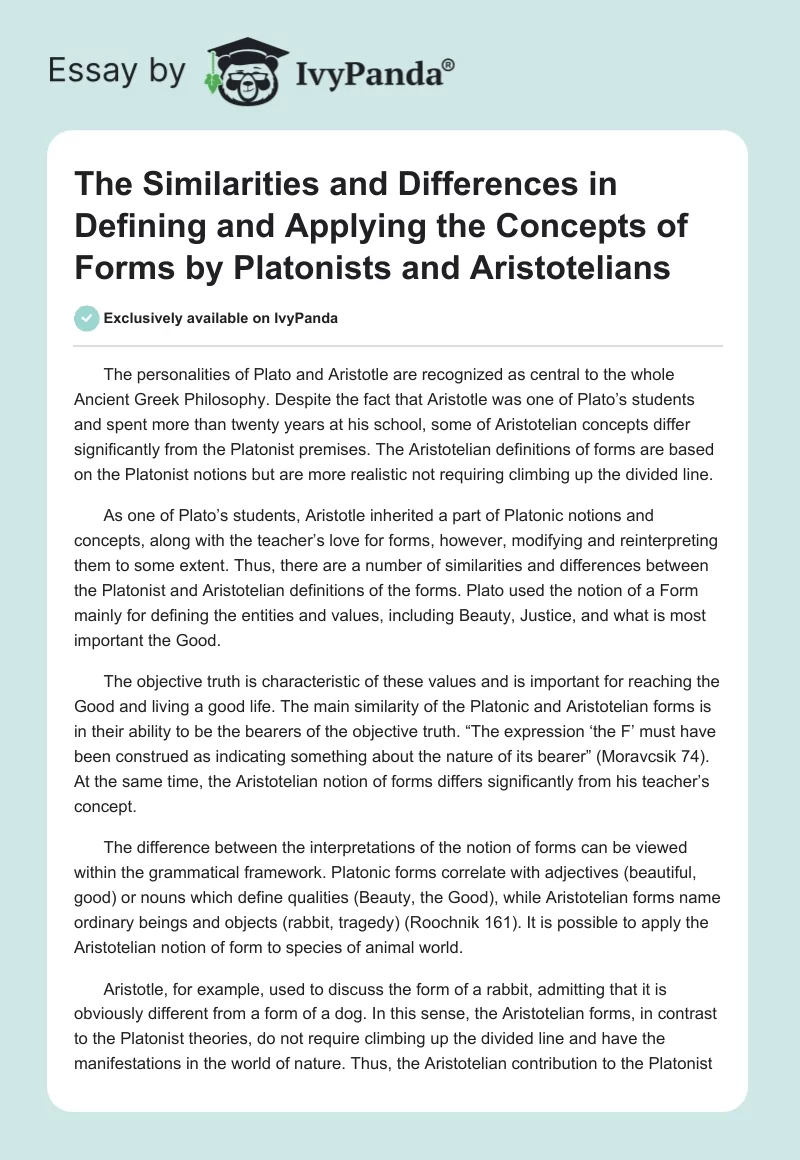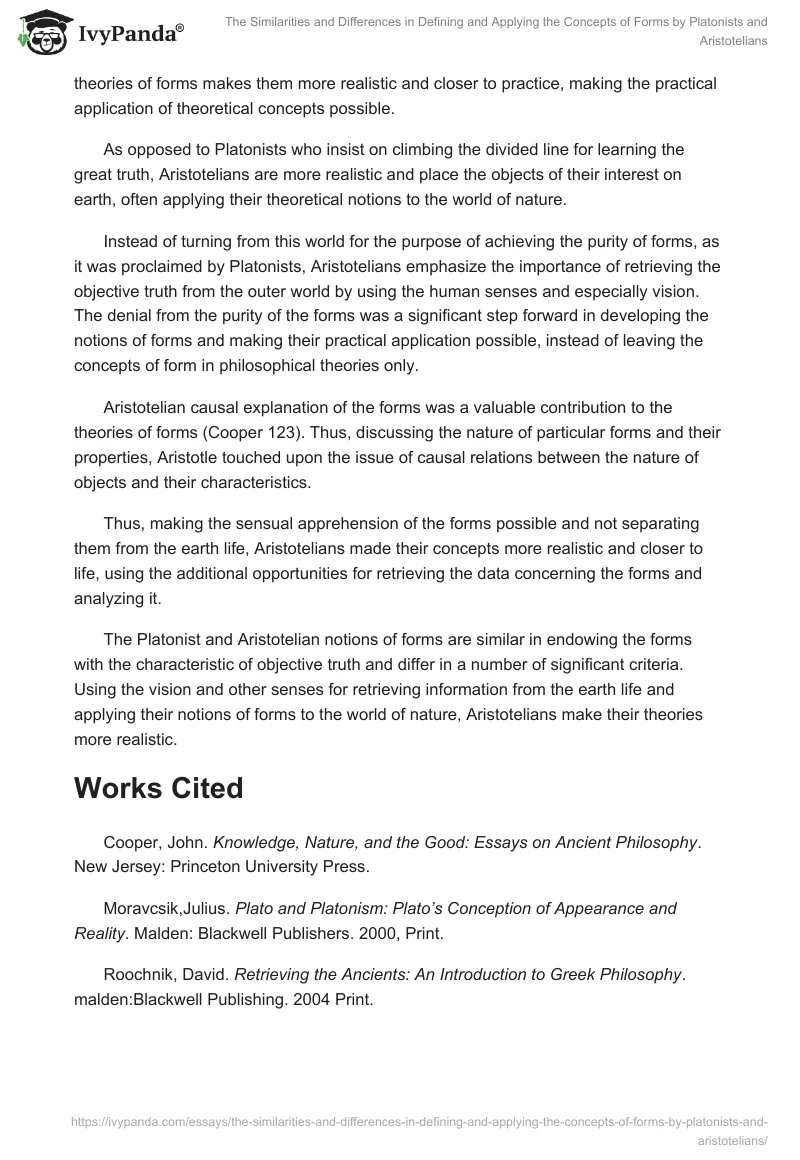The personalities of Plato and Aristotle are recognized as central to the whole Ancient Greek Philosophy. Despite the fact that Aristotle was one of Plato’s students and spent more than twenty years at his school, some of Aristotelian concepts differ significantly from the Platonist premises. The Aristotelian definitions of forms are based on the Platonist notions but are more realistic not requiring climbing up the divided line.
As one of Plato’s students, Aristotle inherited a part of Platonic notions and concepts, along with the teacher’s love for forms, however, modifying and reinterpreting them to some extent. Thus, there are a number of similarities and differences between the Platonist and Aristotelian definitions of the forms. Plato used the notion of a Form mainly for defining the entities and values, including Beauty, Justice, and what is most important the Good.
The objective truth is characteristic of these values and is important for reaching the Good and living a good life. The main similarity of the Platonic and Aristotelian forms is in their ability to be the bearers of the objective truth. “The expression ‘the F’ must have been construed as indicating something about the nature of its bearer” (Moravcsik 74). At the same time, the Aristotelian notion of forms differs significantly from his teacher’s concept.
The difference between the interpretations of the notion of forms can be viewed within the grammatical framework. Platonic forms correlate with adjectives (beautiful, good) or nouns which define qualities (Beauty, the Good), while Aristotelian forms name ordinary beings and objects (rabbit, tragedy) (Roochnik 161). It is possible to apply the Aristotelian notion of form to species of animal world.
Aristotle, for example, used to discuss the form of a rabbit, admitting that it is obviously different from a form of a dog. In this sense, the Aristotelian forms, in contrast to the Platonist theories, do not require climbing up the divided line and have the manifestations in the world of nature. Thus, the Aristotelian contribution to the Platonist theories of forms makes them more realistic and closer to practice, making the practical application of theoretical concepts possible.
As opposed to Platonists who insist on climbing the divided line for learning the great truth, Aristotelians are more realistic and place the objects of their interest on earth, often applying their theoretical notions to the world of nature.
Instead of turning from this world for the purpose of achieving the purity of forms, as it was proclaimed by Platonists, Aristotelians emphasize the importance of retrieving the objective truth from the outer world by using the human senses and especially vision. The denial from the purity of the forms was a significant step forward in developing the notions of forms and making their practical application possible, instead of leaving the concepts of form in philosophical theories only.
Aristotelian causal explanation of the forms was a valuable contribution to the theories of forms (Cooper 123). Thus, discussing the nature of particular forms and their properties, Aristotle touched upon the issue of causal relations between the nature of objects and their characteristics.
Thus, making the sensual apprehension of the forms possible and not separating them from the earth life, Aristotelians made their concepts more realistic and closer to life, using the additional opportunities for retrieving the data concerning the forms and analyzing it.
The Platonist and Aristotelian notions of forms are similar in endowing the forms with the characteristic of objective truth and differ in a number of significant criteria. Using the vision and other senses for retrieving information from the earth life and applying their notions of forms to the world of nature, Aristotelians make their theories more realistic.
Works Cited
Cooper, John. Knowledge, Nature, and the Good: Essays on Ancient Philosophy. New Jersey: Princeton University Press.
Moravcsik,Julius. Plato and Platonism: Plato’s Conception of Appearance and Reality. Malden: Blackwell Publishers. 2000, Print.
Roochnik, David. Retrieving the Ancients: An Introduction to Greek Philosophy. malden:Blackwell Publishing. 2004 Print.


